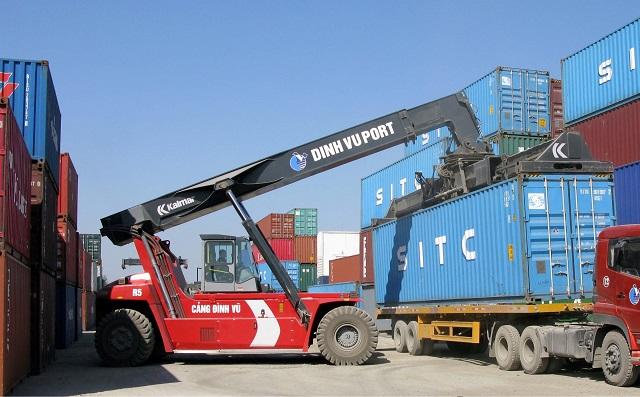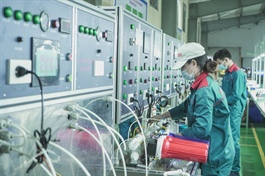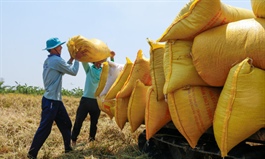Hanoi sets sight on joining three biggest regional logistics hubs
Hanoi sets sight on joining three biggest regional logistics hubs
By 2025, the logistics sector aims to contribute 9-11% of the GRDP with an average growth rate of 17-21%.
Hanoi aims to become one of the top three biggest logistics hubs in the country and of the region, with the industry making a greater contribution to the gross regional domestic product (GRDP) and meeting growing demands for goods transportation domestically and aboard.

Container handling at Dinh Vu Port, Haiphong. Photo: Viet Linh
|
Vice Director of the municipal Department of Industry and Trade Nguyen Thanh Hai gave the remarks while referring to the proposal on promoting logistics development until 2025.
Under the proposal, Hanoi is set to have two major logistics centers by 2025. The first one, expected to cover an area of 50 hectares and located at the city’s northern gateway, would serve the purpose of transporting goods to other provinces/cities via road and air freight.
In the southern gateway, there would be another logistics center with an area of 22 hectares to support the flows of goods to industrial parks in the southern region of Hanoi.
“These centers would link with major seaports, airports, bus stations, or industrial parks, along with a logistics center right inside the Noi Bai International Airport,” said Hai.
By 2025, the logistics sector would contribute 9-11% of the GRDP with an average growth rate of 17-21%, while logistics costs are expected to go down to 14-17% of the GRDP as the rate of logistics outsourcing being reduced to 50-60%.
“As Vietnam is further integrating into the global economy and trading activities are playing a more important role in overall growth, the development of logistics sector has greater significance,” Hai said.
“Investment in logistics infrastructure and the formation of a logistics network would be the required steps for the industry to become a spearhead economic sector of the capital city,” Hai suggested.
Boosting multimodal transport linkage
While the targets are clear, the realization of this goal would require more effort from local logistics companies. Of the total 25,000 firms in this field in Hanoi, 80% are private but only meet 25% of the market demand, mainly due to small scale and limitation in technology, capital, and human resources.
In contrast, a handful of multinational logistics companies in Vietnam, such as Kunhe Nagel, Schenker, Bikar, or APL Logistics are holding 70% of the market share due to their large networks and modern technologies at disposal.
Inadequate logistics infrastructure system is seen as a major issue restricting the development of the sector, as there are limited options to link road transportation to other models such as railway or inland waterway.
Vice Minister of Industry and Trade Tran Quoc Khanh in a recent conference said with the majority of logistics companies being small and medium-sized firms, a stronger linkage between them would foster the sharing of knowledge, experience, and trust for greater efficiency in operation.
“Vietnam is in need of large enterprises serving as the industry leaders to support the sector’s stronger growth,” he noted.
“In addition to investing in warehouses or ports, stronger intermodal transport linkage would help reduce logistics costs and make the sector more competitive,” Tran Duc Nghia, Director of Delta International, told The Hanoi Times.
|
Hanoi has long been seen as having a strategic location as it stands at the heart of the northeast region and serves as the country’s gateway to countries around the world. At present, the capital city has nine operational industrial parks attracting over 600 projects, while the annual average revenue from industrial production is estimated at over US$6 billion. Besides, Hanoi is in the course of developing other 89 industrial clusters across the city, of which the majority are in rural districts of Thach That, Quoc Oai, Chuong My, Thuong Tin, Phuc Tho, Dan Phuong, and Hoai Duc. Industrial parks are homes to potential customers for logistics services, at the same time creating large-scale flows of goods for exports. |



















